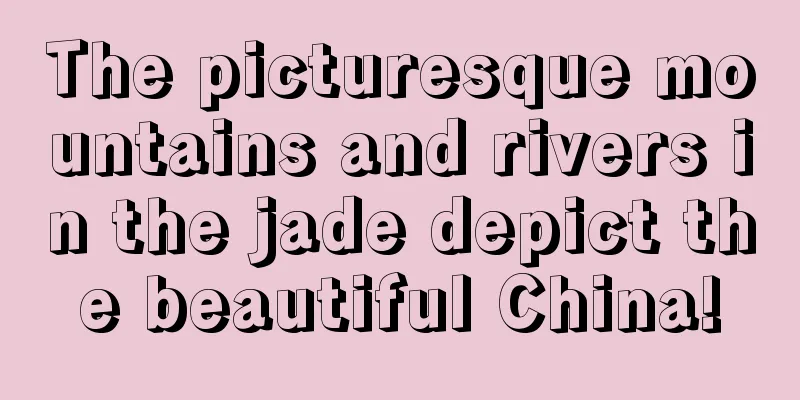Seven Misunderstandings in Jade Appreciation

|
Time has left traces on jade, but it cannot erase people's love for jade. However, loving jade does not mean understanding jade. According to the experiences of many friends that Bihaitong knows, most people have misunderstandings in jade appreciation. Only by getting rid of these misunderstandings can we better appreciate the beauty of jade. Now let’s take a look at the seven common misunderstandings in the process of jade appreciation. Myth 1: The more uniform the green, the better In the market, you can often see some jadeite that is emerald green all over, with bright color and very even distribution. In fact, most of such jadeite is fake. The interior of jade is composed of a collection of granular minerals, so its green color is locally distributed, and there is a boundary between green and non-green. Misunderstanding 2: Learning identification technology on paper Jade optimization and processing technology is changing with each passing day, but the knowledge in books is often lagging behind. If jade lovers buy B-grade or fake jade according to the identification methods in books, it may be because the market has invented new processing technologies that have not yet been summarized and published in books. Therefore, we cannot rely solely on paper talk. Myth 3: The ones that don’t change color are A-grade goods Some dyed jade can keep its bright color for up to 10 to 20 years. However, some A-grade jadeite in red or yellow colors may change color in a relatively short period of time, mainly due to changes in the chemical elements inside the jadeite. Myth 4: Green jade is good Emerald green jade is the best quality among A-grade jade, but not all jade is green. There is a kind of jade that forms a bright "jade" color due to the infiltration of iron. If such jade has high transparency and good texture, it will also be popular in the market. Myth 5: The older the jade, the better We often encounter many collectors who are particular about collecting "ancient jade", but there is no distinction between "ancient" and "modern" jade collection. Jade was introduced into China during the Qing Dynasty. At that time, there were not many jade raw materials and the identification ability was poor, so the quality of jade that was older was relatively poor. Myth 6: The more complex the process, the better “Simplicity is beauty.” Many high-quality jades are often made into very simple bracelets or ring faces without any carving; while some jades with impurities or cracks are often carved into figures or scenes by skilled craftsmen to cover up their natural imperfections. Myth 7: The rarer the item, the more valuable it is Natural minerals sometimes form very special patterns. For example, some minerals are arranged in shapes similar to animals or mountains and rivers. Some collectors often hype this kind of jade as a rare treasure. In fact, in addition to being rare, this kind of jade must conform to aesthetic principles and have good texture to be truly "valuable".
|
<<: What are the characteristics of genuine high-end A-grade jadeite?
Recommend
The most comprehensive explanation of the meaning of jade patterns in history, useful for collection!
The finished jade products currently available on...
These jadeite purchasing points are obviously very important, why are they always overlooked?
When it comes to appreciating jadeite, everyone w...
The legendary dragon stone jade is a hundred times more beautiful than the glass type!
Usually, the color and water quality are importan...
Emerald leaves are more perfect because of you
"One flower, one world; one leaf, one bodhi&...
The correct way to appreciate jade bracelets
There are many rules in the jade industry, for ex...
How many of the 10 benefits of wearing jade bracelets do you know?
More and more people are joining the ranks of jad...
Enter the jade processing factory and see the entire process from jadeite raw stone to bracelet at close range
What we usually see are flawless jade bracelets. ...
Why can the Emerald Golden Toad bring wealth?
As the saying goes, the phoenix only roosts on th...
Jade starts to turn darker and yellower after being worn for a long time? Your jade may have mutated!
Jade is loved for its transparent and emerald gre...
Why does jade need to be inlaid?
Jade inlays are mainly used in jewelry. In our da...
Jadeite Culture Chinese Culture and Jade Culture
Joseph Needham, a famous British historian of Chi...
What is the relationship between blue water jade and oily green jade?
Oily green jadeite and blue water jadeite can be ...
For Burmese jadeite, for good quality jadeite scraps, no matter how small they are, try not to throw them away!
Although the scraps of good quality jadeite are s...
Only by understanding the meaning of jadeite can you buy jadeite that suits your taste
Many people like jewelry. When buying jewelry, th...
Briefly explain the five elements of jade evaluation, learn them and you can become a jade evaluation expert
Jade lovers often send me private messages asking...









